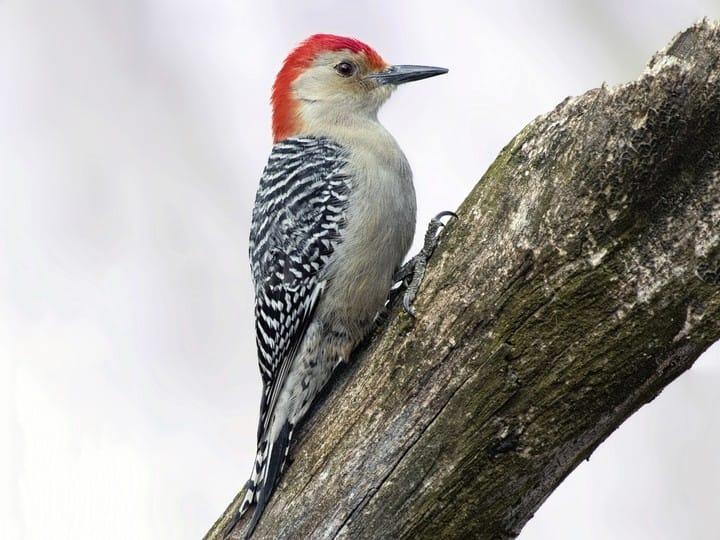Revealing the Keys of Woodpeckers: Behavior, Habitat, and Extra
Woodpeckers, with their unique behaviors and specialized adaptations, have actually lengthy fascinated scientists and nature enthusiasts alike. By revealing the secrets surrounding woodpeckers' behavior and environment selections, a much deeper understanding of these avian wonders emerges, offering a glimpse right into their interesting world.
Woodpecker Behavior Insights
In analyzing woodpecker actions, an interesting display of specialized abilities and adaptations arises, shedding light on their exceptional eco-friendly specific niche. Woodpeckers, known for their unique drumming on trees, have a range of behavior characteristics that add to their survival and success in their atmosphere.
In addition, woodpeckers display an one-of-a-kind feeding habits identified by their ability to extract bugs from tree bark utilizing their specialized beaks. Their long, barbed tongues help in recording prey, while their solid neck muscles offer security and precision during pecking activities. This feeding strategy permits woodpeckers to access concealed insect larvae and remove them with amazing effectiveness.
Environment Preferences and Selection
What aspects affect the habitat preferences and choice of woodpeckers? Woodpeckers are very adaptable birds understood to live in various atmospheres worldwide. Nonetheless, they do show preferences for certain habitat attributes. One crucial element influencing woodpecker environment choice is the schedule of ideal nesting websites. Woodpeckers typically choose forests with a mix of mature trees that offer adequate possibilities for dental caries excavation. These tooth cavities act as vital nesting and roosting websites for woodpeckers and are crucial for their reproducing success.
Additionally, woodpeckers show a choice for environments with a bountiful supply of food resources. They are mostly insectivorous, feeding upon beetles, ants, larvae, and other insects located in rotting wood or tree bark. For that reason, woodpeckers tend to prefer wooded areas with a varied insect populace to satisfy their dietary needs.
Furthermore, the presence of dead or worn out trees is one more key consider woodpecker environment selection. These trees not just supply food sources yet likewise offer appropriate substrate for dental caries excavation. Dead trees are necessary for the upkeep of healthy woodpecker populaces, as they play a crucial role in the woodpeckers' life process and community characteristics.
Feeding Practices and Diet Regimen Structure
Woodpeckers demonstrate a specialized feeding habits focused on foraging for bugs within various environments. Their diet plan largely contains pests such as beetles, ants, caterpillars, and spiders, which they locate by tapping on tree bark and paying attention for the audio of motion inside. Woodpeckers utilize their strong beaks to drill right into the wood and their long, barbed tongues to extract prey from gaps. In addition to pests, woodpeckers likewise eat tree sap, fruits, nuts, and click here now seeds, adding range to their diet regimen depending upon the period and schedule of food sources.
The foraging techniques of woodpeckers are well-adapted to their arboreal lifestyle. Woodpeckers play a crucial duty in preserving the health and wellness of forests by regulating insect populaces and helping in the decay of visit our website wood.
Drumming Appears and Interaction
Using rapid drumming audios on various surfaces, woodpeckers use an unique form of interaction to indicate territory borders and draw in companions. This drumming habits is not only a method of communication yet likewise works as a way for woodpeckers to develop their visibility within a specific area. The strength, speed, and pattern of the drumming can convey important info to other woodpeckers around.
Woodpeckers utilize drumming audios to reveal their presence in an area and to warn off possible intruders. The loud and recurring nature of the drumming functions as a clear signal to other woodpeckers that the location is already asserted. This helps in lowering disputes and decreasing physical fights in between individuals.

Survival Adaptations and Specialized Makeup

Conclusion
To conclude, look these up woodpeckers show special behaviors, such as drumming sounds for interaction, and have specialized anatomy for survival in their picked environments. Their feeding practices and diet plan composition further show their versatility to various settings. By comprehending these aspects of woodpeckers, scientists and guardians can better shield and protect these fascinating birds and their ecological communities.